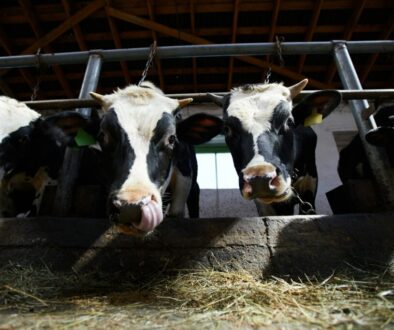Over-planting of GM corn costing farmers billions, study finds
A new study adds to evidence that farmers in the US corn belt have over-planted a type of genetically modified (GM) corn, leading to estimated losses of more than $1 billion as the pests the corn was designed to repel have grown resistant over time.
The authors of the paper, published Thursday in the journal Science, said their findings supported a move toward a “more diversified” seed supply.
Known as Bt corn because it contains up to five toxins produced by a bacterium called Bacillus thuringiensis, the crop is designed to express proteins that make it toxic to certain pests, including corn rootworm. More than 85% of corn planted in the US is the Bt variety, to which various insect pests are becoming resistant.
After examining rootworm crop damage data from 10 states over the period 2005-2016, the researchers determined that many farmers planted more GM corn than was considered necessary to address pest problems. Bt seeds typically carry a significant price premium.
The scientists found that planting Bt corn in certain eastern Corn Belt states provided “only marginal yield protection benefits,” benefits that appear to often be eclipsed by the higher costs for GM seed versus non-GM seed.
Moreover, when you plant more Bt corn than necessary, “you move the pest toward the evolution of resistance,” said Christian Krupke, a professor of entomology at Purdue University, and a co-author of the study.
Between 2014 and 2016, farmers in the Indiana, Ohio, and Michigan planted about 50% of their fields with Bt corn, but data the study authors reviewed suggested the ideal level was 18% or less. If farmers in these states had planted this lower, optimal level of Bt corn, they would have made $99 million more per year during this period, according to the paper.
“This study is the first to show that short-term economic gains for individual farmers are associated with planting less Bt corn targeting rootworms,” said Bruce Tabashnik, a University of Arizona professor who wasn’t involved in the study.
So far, rootworm resistance to Bt corn is documented in at least six states in the US Corn Belt, and 29 cases of resistance to Bt crops have been documented in 11 pest species in seven countries, he said.
The scientists were surprised to find much higher levels of corn rootworm in the western corn belt compared to the east. “You have to keep track of the biology more than we would have anticipated,” Krupke said.
The study also cites evidence that the efficacy of Bt corn’s toxicity to pests generally declined as Bt planting increased.
As resistance rises, the use of synthetic insecticides often does as well, though such costs were not included in the potential losses the study attributed to over-planting.
The study authors noted that makers of Bt corn, often “stack” or combine genetic traits that enable the corn to fight pests with other genetic traits, such as herbicide-tolerance, in seed supplies sold to farmers. The combination makes it difficult for farmers to clearly identify the individual cost of each trait, the authors said.
“Seed companies driven by profit maximization tend to strategically combine traits and genetics,” the study states. “As seed industry consolidation continues, US farmers face a narrowing list of seed vendors and may be compelled to adopt varieties with unnecessary traits.”
The study authors proposed “enhancing transparency” in seed marketing through labeling for trait combinations, including detailing the premium attached to each trait.
And they called for government programs that incentivize seed companies to broaden genetic diversity and trait combinations available for farmers.
The study issued a warning as well, saying “increasing rootworm resistance to Bt maize has led to a resurgence in insecticide use that Bt hybrids were intended to replace… If current and future related innovations are managed as Bt maize hybrids have been, we risk entering a cycle of rapid obsolescence among transgenic technologies, a biotechnology version of the ‘pesticide treadmill.’”
Tabashnik said that the best methods to prevent resistance and prolong the effectiveness of Bt corn include not using more GM crops than necessary, practicing crop rotation, and proactively planting “refuges” of conventional corn.
These findings illustrate the importance of widespread pest monitoring and continuous funding for agricultural research, some of which is imperiled by recent budget cuts, Krupke said.
(Featured image by Julian Schöll via Unsplash.)





March 1, 2025 @ 2:02 pm
Thank you for the article. Very informative
March 1, 2025 @ 1:17 pm
If it toxic to insects it probably toxic to livestock and humans. I have noticed my neighbor 3 miles away plants roundup ready corn. Birds are deer never touch it. I plant old fashion non gmo open pollinated corn and the birds, deer, turkey and raccoon destroyed it. I lost 2/3rd of my crop